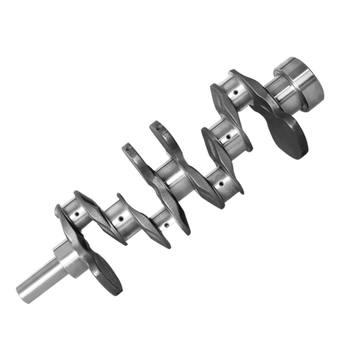The Importance of Crankshaft Balancing
Did you know that an unbalanced crankshaft can lead to decreased engine performance, increased wear and tear, and even engine failure? To avoid these issues, it's essential to understand and apply crankshaft balancing techniques. This article will explore various methods, from basic to state-of-the-art computer-assisted precision.
Traditional Balancing Techniques
In the past, mechanics relied on static and dynamic balancing methods to ensure a smooth-running engine. Static balancing focuses on equalizing the weight distribution of the crankshaft, while dynamic balancing addresses both weight and centrifugal forces. These techniques, although less precise than modern methods, still play a role in maintaining engine health.
Static Balancing: Weighing and Adjusting
To perform static balancing, mechanics use a balancing machine to measure the weight distribution of the crankshaft. They then add or remove material, typically in the form of balancing weights, to achieve equilibrium. This process can be time-consuming and requires a skilled touch, but it remains an effective way to address basic imbalances.
Dynamic Balancing: Addressing Vibration
Dynamic balancing takes things a step further by accounting for centrifugal forces generated by the spinning crankshaft. By measuring vibrations at various speeds, mechanics can identify and correct imbalances that may not be apparent during static balancing. This process often involves adding balancing weights to the crankshaft's counterweights or rod journals.
The Role of Modern Technology
As engines have become more complex, so too have balancing techniques. Computer-assisted precision balancing is now the gold standard for ensuring optimal engine performance. These systems use advanced software and hardware to measure and correct imbalances with incredible accuracy.
Computer-Assisted Balancing: Precision Meets Efficiency
Computer-assisted balancing machines offer numerous advantages over traditional methods. They can quickly and accurately identify even the most minute imbalances, allowing for precise corrections. Additionally, these machines can store and retrieve data, making it easy to track changes and maintain consistent performance over time.
Actionable Tips for Crankshaft Balancing
1. Consult your vehicle's manufacturer guidelines for recommended balancing procedures and specifications.
2. Always use high-quality balancing equipment to ensure accurate results.
3. Regularly inspect and maintain your engine components to prevent unnecessary wear and imbalances.
4. Consider investing in a computer-assisted balancing machine for optimal performance and efficiency.
In Conclusion: The Future of Crankshaft Balancing
As engines continue to evolve, so too will crankshaft balancing techniques. By staying informed about the latest advancements and best practices, you can ensure your engine runs smoothly and efficiently for years to come. So, the next time you're under the hood, remember the importance of crankshaft balancing and the role it plays in maintaining your vehicle's overall health.




